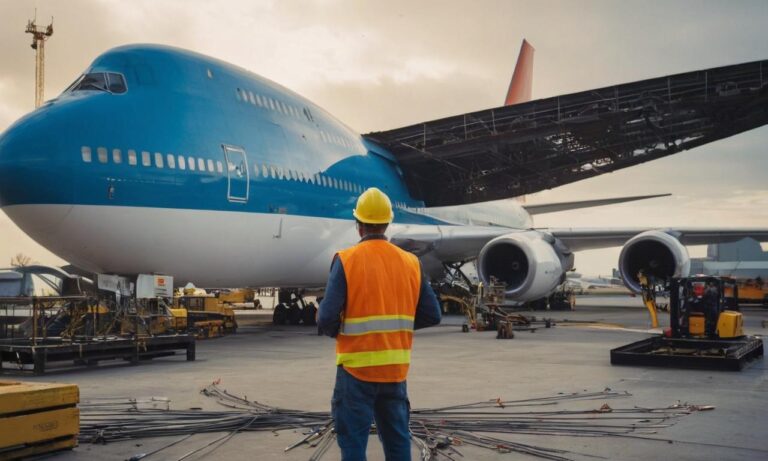Building a Boeing 747 is a testament to human engineering prowess and meticulous attention to detail. The process of crafting this iconic aircraft involves an intricate dance of design, manufacturing, assembly, and testing. Let’s delve into the fascinating timeline and stages that culminate in the creation of this colossal flying machine.
The Genesis: Design and Planning
Before the tangible work commences, years of meticulous planning and design set the stage. Engineers, designers, and aviation experts collaborate to conceive the blueprint of the Boeing 747. This phase involves detailed aerodynamic studies, structural designs, material selection, and countless simulations to ensure optimal performance and safety.
Manufacturing Marvels
The physical manifestation of the 747 begins with the manufacturing of its numerous components. The wings, fuselage sections, engines, tail assembly, and myriad other parts are crafted with precision. These components are often constructed in different facilities across the globe, requiring a sophisticated logistical network to ensure seamless integration.
Assembly Symphony
Bringing together these intricately crafted components is a symphony in itself. The assembly process takes place at specialized facilities, where skilled technicians meticulously piece together the colossal aircraft. This phase involves aligning sections, attaching wings, installing engines, and intricately connecting thousands of electrical and mechanical components.
Quality Assurance and Testing
Ensuring the utmost safety and reliability demands rigorous testing. The completed aircraft undergoes exhaustive quality checks and testing protocols. From stress tests on the airframe to evaluating engine performance and intricate systems checks, every aspect is scrutinized to meet stringent aviation standards.
A Time-Intensive Journey
So, how long does it take to build a Boeing 747? On average, the entire process—from initial design to the final rollout—can span around three to four years. However, the actual timeline can vary based on several factors such as production schedules, technological advancements, and specific client requirements for customization.
The creation of a Boeing 747 is a testament to human ingenuity, precision engineering, and collaborative efforts. It’s not merely about constructing a plane; it’s a symphony of innovation and dedication that takes years to orchestrate. From conceptualization to the runway rollout, each step in the process is a testament to the marvels of modern aviation.
Logistics and Global Collaboration
Coordinating the manufacturing of various components across multiple global sites requires an intricate logistical framework. It involves a synchronized effort among different factories, transportation networks, and suppliers to ensure timely delivery and seamless integration.
International Collaboration
The creation of a Boeing 747 involves collaboration on a global scale. Different countries and regions contribute expertise, manufacturing capabilities, and specialized components. This international cooperation adds another layer of complexity and richness to the aircraft’s construction.
Frequently Asked Questions
Here are some common questions regarding the construction of a Boeing 747:
| Question | Answer |
|---|---|
| Are all Boeing 747s identical in their construction? | No, there can be variations based on client specifications, such as interior design, seating arrangements, and special features. |
| How many parts are there in a Boeing 747? | There are over 6 million parts in a Boeing 747, ranging from tiny fasteners to massive wings and engines. |
| What are some challenges faced during the construction? | Coordinating global logistics, maintaining quality standards, and adapting to evolving technologies are among the key challenges. |
Conclusion
From the collaboration of international talent to the complexity of logistical coordination, constructing a Boeing 747 represents a convergence of efforts and technologies. It’s a testament to the capability of humanity to achieve the extraordinary.






